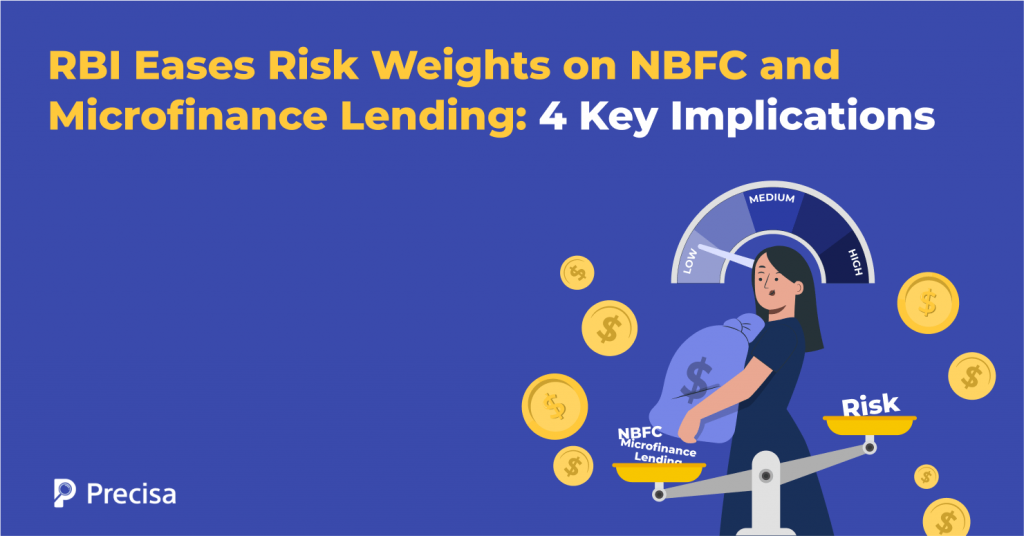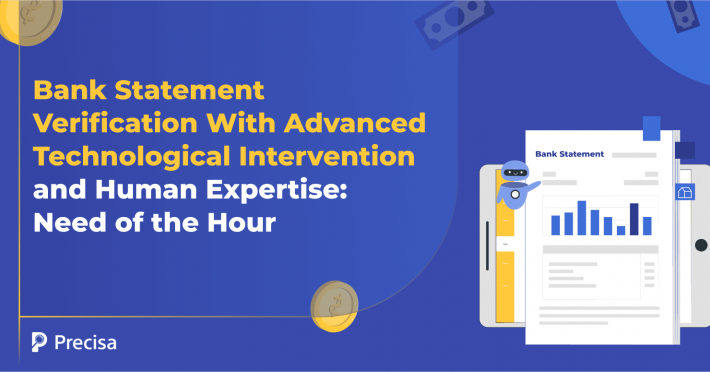RBI Eases Risk Weights on NBFC and Microfinance Lending: 4 Key Implications

By reducing risk weights on lending to microfinance institutions (MFIs) and non-banking financial companies (NBFCs), the Reserve Bank of India (RBI) has indicated a major policy shift.
Intended to boost lending availability and, thus, economic growth, this step now modifies the tighter capital requirements introduced in 2023.
The new policy reduces risk weights for certain categories, which has important implications for banks, especially with respect to capital distribution, lending policy, risk management, and profitability.
This guide explores the specifics of RBI’s policy modification, its effects on banks, and how it might impact India’s credit scenario.
Risk Weights in Banking: A Snapshot
Risk weights are a crucial element of banking regulations, determining the amount of capital a bank must hold against its loan exposures. A higher risk weight implies that banks have to set aside more capital, thus reducing their lending capacity.
A lower risk weight, on the other hand, allows banks to lend more freely, improving liquidity and credit flow.
For MFIs and NBFCs, risk weights affect their funding availability since banks take these regulatory obligations into consideration when they lend.
Therefore, any rise in risk weights increases the cost of borrowing, while a decrease relieves capital pressures and promotes lending.
RBI’s Policy Shift: What Are the Changes?
In November 2023, RBI raised risk weights on bank credit to NBFCs and MFIs by 25 percentage points, citing concerns regarding excessive credit growth, especially in unsecured credit.
This resulted in increased capital requirements for banks, lowered credit availability, and increased borrowing costs for NBFCs and MFIs.
However, in its recent monetary policy statement, the RBI has relaxed these curbs via:
- Adjusting risk weights on bank loans to NBFCs: The risk weights have been adjusted back to being determined by the NBFCs’ credit ratings, reversing the prior uniform increase of 25 percentage points.
- Decreasing risk weights on microfinance loans: In microfinance lending, the risk weight has been updated from 125% to 100%, enhancing affordability for end borrowers.
By reversing the 2023 decision, the RBI aims to balance financial stability and credit growth so that NBFCs and MFIs are able to continue their important role in the economy.
Reduced Risk Weights: What Are the Implications for Banks?
RBI’s relaxation of risk weights can have the following advantages for the banks:
1. Increased Lending Capacity
As risk weights have been cut on microfinance lending and NBFC loans, banks are now in a position to hold lower capital against these assets. This frees up capital that can be re-employed for further lending or other investment opportunities.
For example, a bank with NBFC exposure of Rs. 1,000 crore in the previous 125% risk weight regime would require holding Rs. 112.5 crore of capital (assumption of capital requirement of 8%).
On the new 100% risk weight, this requirement was reduced to Rs. 90 crore.
The freed-up Rs. 22.5 crore can then be used either for other loans or selective assets expansion.
2. Lowered Cost of Lending and Competitive Pricing
As risk weights are high, banks have to hold more capital, which raises their cost of funds. This cost is generally transferred to NBFCs and MFIs in the form of higher interest rates.
With the new norms, banks are now able to provide more competitive lending rates to these players, thus:
- Lowering the cost of borrowing for NBFCs and MFIs
- Fostering increased borrowing activity
- Increasing credit availability for under-served segments
3. A Strategic Shift in Loan Portfolio Allocation
Banks categorise their loan book into various segments, including corporate loans, retail loans, agriculture, and microfinance. They have traditionally been cautious about microfinance lending because of its perceived higher credit risk and lower ticket sizes.
However, with a lowering of capital adequacy requirements, banks may rethink their exposure to microfinance and NBFC lending. It may:
- Encourage banks to enhance exposure to satisfy PSL targets.
- Increase inclination towards NBFC partnerships so as to access new segments of customers.
- Enhance digital lending presence through partnership with fintech-focused NBFCs.
4. Improved Profitability and ROE Enhancement

From a financial performance standpoint, lower risk weights contribute to improved Return on Assets (ROA) and Return on Equity (ROE) by reducing the capital drain associated with risk-weighted assets.
Some of the likely advantages are:
- With reduced capital allocation per unit of lending, the banks can earn higher returns on their loan book.
- Enhanced NBFC partnerships can result in fee-based revenues through securitisation transactions and structured lending products.
- An increased emphasis on microfinance lending allows banks to access high-yielding small-ticket loans with strong repayment profiles.
Some Risks and Considerations of This RBI Directive
Despite this positive decision from RBI, lenders still need to be mindful of underlying risks:
1. Credit Quality Issues
The earlier increase in risk weights was prompted by worries over indiscriminate unsecured lending. With lending standards eased, banks need to have strong risk management techniques to avoid accumulation of NPAs.
2. Over-dependence on NBFCs
Several NBFCs are dependent on bank financing for their own lending activities.
Although lower risk weights promote bank-NBFC cooperation, banks must exercise caution in evaluating counterparty risk and should not concentrate excessively on this segment.
3. Regulatory Uncertainty
The RBI’s stance on risk weights could change again if macroeconomic conditions deteriorate. Banks need to maintain flexibility in their credit strategy to adapt to potential regulatory shifts.
4. Bank Ratings and Capital Planning Impact
The main factor taken into account by credit rating agencies when assigning ratings is the capital adequacy of banks.
Rapid expansion of bank lending to NBFCs can lead to rating assessments that raise the banks’ cost of capital.
Key Takeaway
The RBI’s move to relax risk weights on NBFC loans and microfinance lending is a welcome development for the banking industry.
Banks will become more flexible in extending credit, lowering the cost of lending, and improving profitability by reducing capital requirements.
However, with such regulatory shifts, lenders need data-driven insights to optimise lending strategies, manage risk exposure, and enhance profitability.
Precisa, a leading cloud-based financial data analytics platform, empowers NBFCs, banks, and microfinance lenders with real-time credit insights, risk assessment tools, and AI-driven analytics to streamline decision-making.
Leverage Precisa’s financial intelligence to stay ahead of regulatory changes. Give it a try now!



